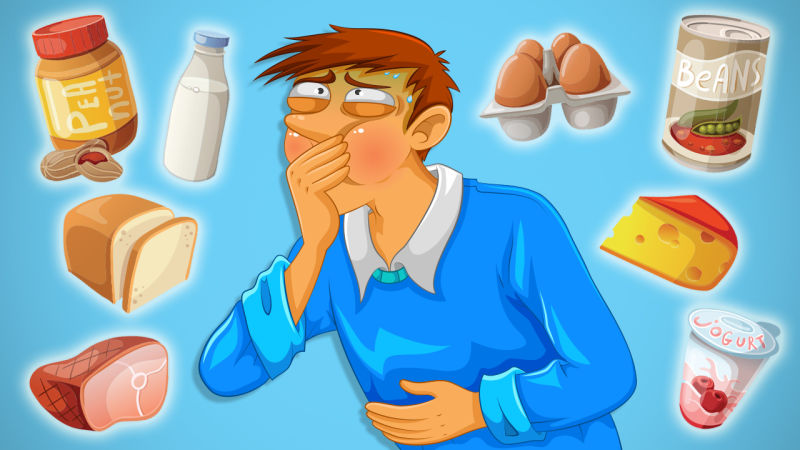
Did you know that 50 million Americans suffer from allergies? And when it comes to food allergies, 4-6 percent of children have them, as do about 4 percent of adults. Although food allergies occur most often in babies in children, they can develop at any point in your life. How do you know if you have food allergies? The most important thing you can do to answer that question is to visit a doctor and to not try and diagnose yourself.
What are the most common food allergies?
Almost every food in the world can cause an allergic reaction, but 90 percent of all food allergies come from eight kinds of food:
- Eggs
- Milk
- Peanuts
- Tree nuts
- Fish
- Shellfish
- Wheat
- Soy
Other common allergens include seeds, particularly sesame and mustard seeds. In other countries, they are considered big allergens.
What are the symptoms of food allergies?
There are several ways that food allergies will come to light. They might happen through your skin, your gastrointestinal tract, your cardiovascular system or your respiratory system. These are some common symptoms of food allergies:
- Vomiting and/or stomach cramps
- Hives
- Shortness of breath
- Wheezing
- Repetitive cough
- Shock or circulatory collapse
- Hoarse throat, trouble swallowing
- Swollen tongue that makes talking – and sometimes breathing – difficult
- Weak pulse
- Skin turns pale or blue
- Dizziness and imbalance
- Anaphylaxis – the most severe allergic reaction. It can cause you to stop breathing and can be life-threatening if not treated immediately.
Most food allergy symptoms happen within two hours of eating the food. Often, though, the allergy pops up within a few minutes. Sometimes, although rarely, an allergic reaction will wait four to six hours, or sometimes longer, to occur. This happens more often in children who get eczema from a food allergy, and people who are allergic to red meat because they were bitten by a lone star tick.
If you have severe food allergies, be very careful when eating out in restaurants. Not all servers and kitchen staff know every ingredient in the meal you order.
How do you diagnose food allergies?
The first step to diagnosing food allergies is to see an allergist. The allergist will ask you a series of questions, and then the doctor will likely perform one or more tests. These tests include:
- Skin prick test – a test that checks for up to 40 different allergens all at once
- Blood test – measures the specific antibodies to certain foods that trigger food allergies
- Oral food challenge – food is eaten slowly, in increasing amounts, while a doctor supervises you.
- Trial elimination diet – This is when your doctor asks you to eliminate certain foods from your diet in an effort to see which foods are causing allergic reactions.
